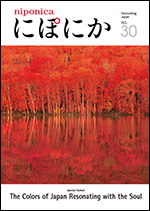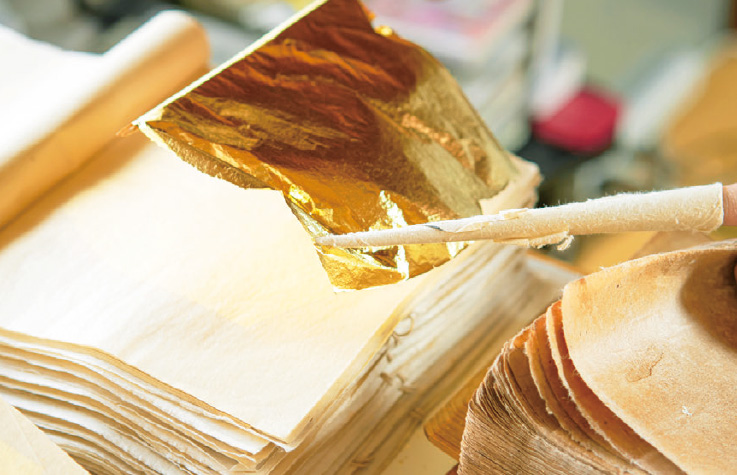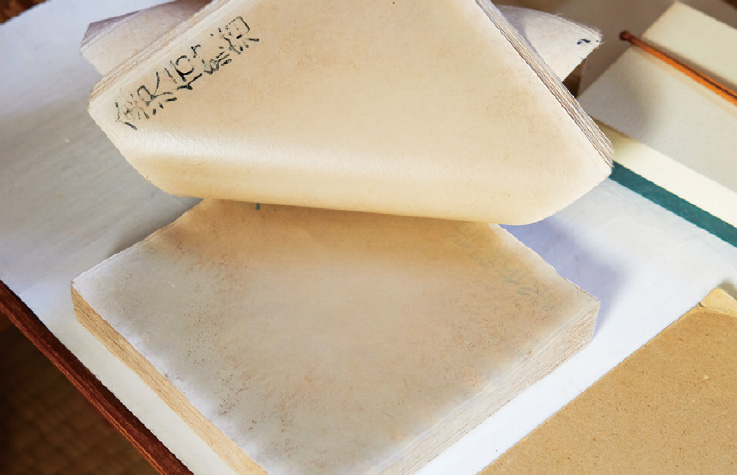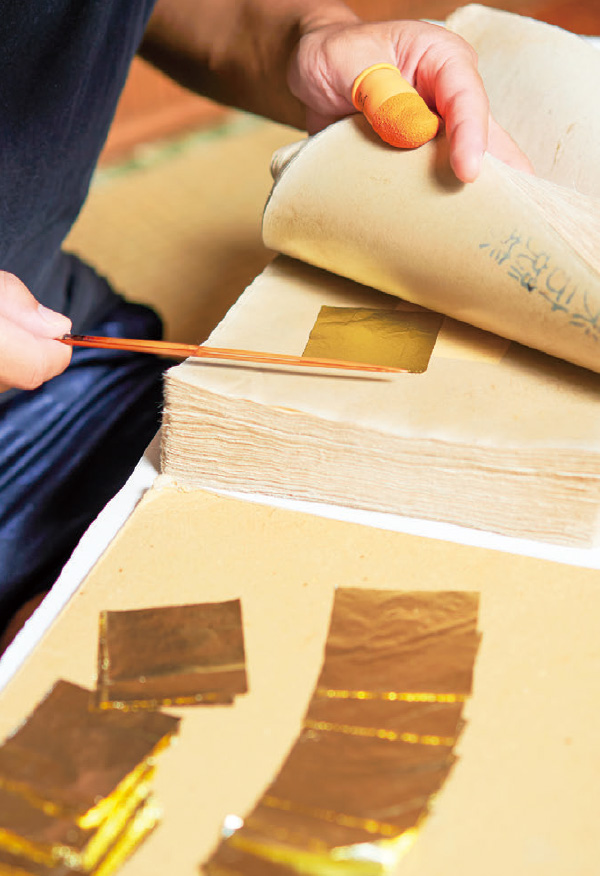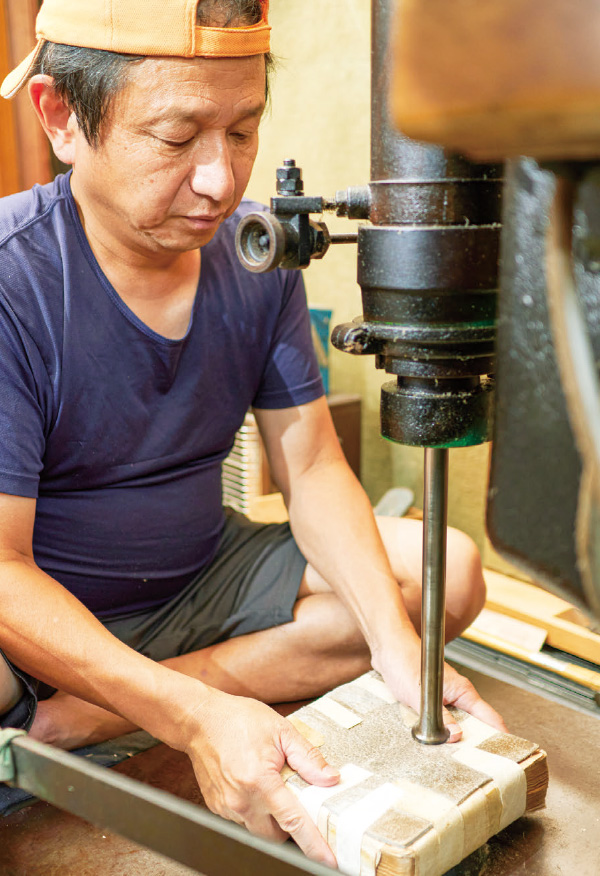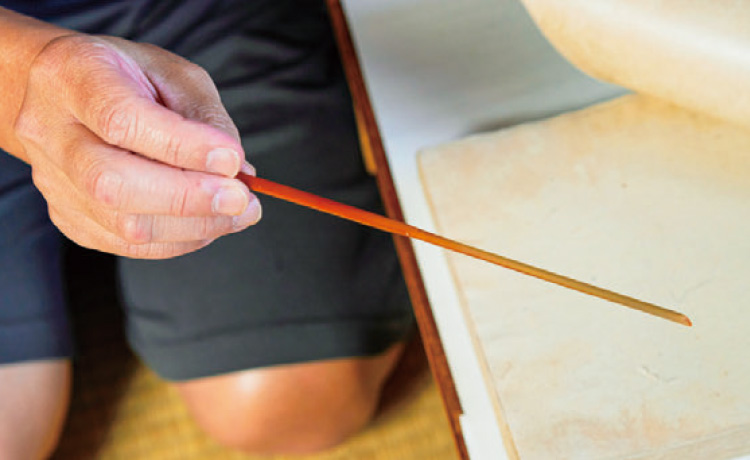
2021 NO.30
MenuThe Colors of Japan Resonating with the Soul

Craftsmanship Glowing in Gold:
An Artisan of Gold Leaf Hammering
Photography: Takishima Yoji Photo: PIXTA

Gold leaf is vital to traditional crafts such as fans.
Gold leaf is made by flattening an alloy of pure gold with minuscule traces of silver and copper to a thickness of approximately 1/10,000 of a millimeter. This has been used to magnificently decorate architecture, sculptures, arts and crafts, as well as many everyday items. The techniques of finely stretching valuable gold are the key to gold leaf, predominantly produced in Kanazawa, Ishikawa Prefecture, today.
Matsumura Kenichi is an artisan who has been creating gold leaf for more than 40 years in Kanazawa. He reveals that “craftsmanship is another word for perseverance”—producing gold leaf requires tenacity, involving countless repetitions of the same processes.
A technique called entsuke has a tradition of over four centuries in Kanazawa, with a key characteristic of it being that a specialized foil-beating paper is used to hammer and stretch the gold leaf. It is said that the quality of the foil-beating paper determines the final grade of the gold leaf, thus artisans invest significant time in preparing this. Washi (Japanese traditional handmade paper) manufactured with a special soil blend is soaked in straw lye or other medium, dried completely, and then soaked again. This cycle is repeated numerous times. When the foil-beating paper is complete, the surface is the epitome of smoothness and ideally suited to stretching the gold leaf.
The artisan’s accumulated experience and skills are indispensable to hammer gold leaf that is thin enough to be translucent.
It’s in the next step that the gold-leaf artisan flexes his skill by flattening the gold leaf to an astounding thinness. He cuts and divides gold leaf that has already been flattened by machine, inserts each piece between 1,800 sheets of the foil-beating paper, and then hammers it with a machine for about half a day. He will then transfer each gold leaf individually into more foil-beating paper and hammer this some more with a machine. The artisan relies on his intuition during the long hours it takes to machine-pound the gold leaf to this extreme thinness. The task is complete when he trims them into standard 109-millimeter squares to finish.
Matsumura was born in Kanazawa and trained under his late father, who was also a gold-leaf artisan, to hone his craft. “There are no written manuals in the world of the hereditary craft,” he says, looking back on his days of training. “Back then, we were told to make skills our own through observation. I learned by watching over his shoulder and imitating him to absorb the techniques into my body.”
“Gold leaf has always and still is produced around the world, but Kanazawa’s gold leaf reflects light gently and has a unique warmth,” Matsumura says, with a tenderness in his eyes.
He is now working to pass on the craft to the next generation. Instilled with the great enthusiasm of artisans, the radiance of gold leaf will never fade.
*On December 2020, “Traditional skills, techniques, and knowledge for the conservation and transmission of wooden architecture in Japan” has been inscribed on the UNESCO’s Representative List of the Intangible Cultural Heritage of Humanity, which includes the production of entsuke gold leaf.
1. The cut and divided gold leaf sheets are individually inserted between 1,800 sheets of foil-beating paper.
3. After transferring to another stack of foil-beating paper, this is thinned by more machine hammering.
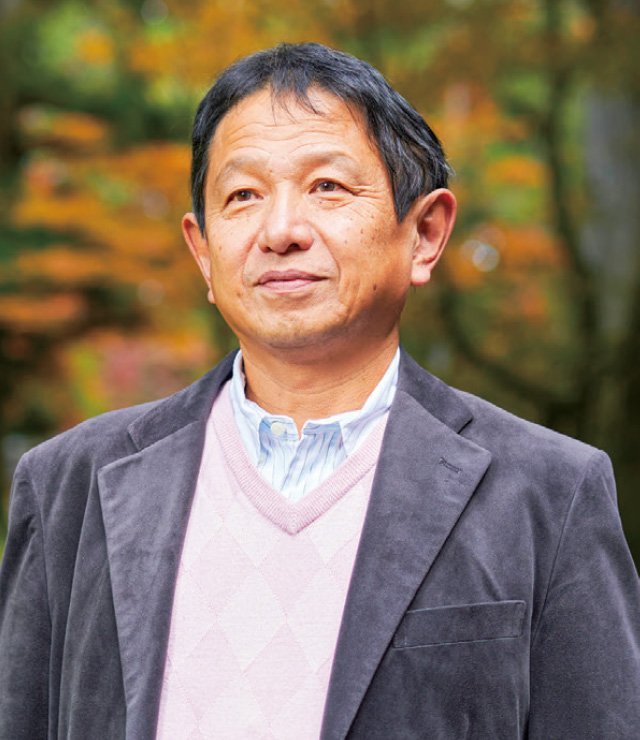
Matsumura Kenichi, Traditional Kanazawa Gold Leaf Craftsman
Aiming to pass on the craftsmanship he inherited from his father, Matsumura established the Association for the Conservation of Traditional Production Techniques of Kanazawa Gold Leaf and assumed the post of chairman. He works actively to share and maintain entsuke gold leaf for the next generation, along with his second son Noriyuki, who is also a gold leaf artisan. He has won numerous awards, including the Skill Encouragement Award from the Ishikawa Association of Traditional Industry Promotion in 1989 and the Commissioner for Cultural Affairs Award, Agency for Cultural Affairs of Japan in 2019.

